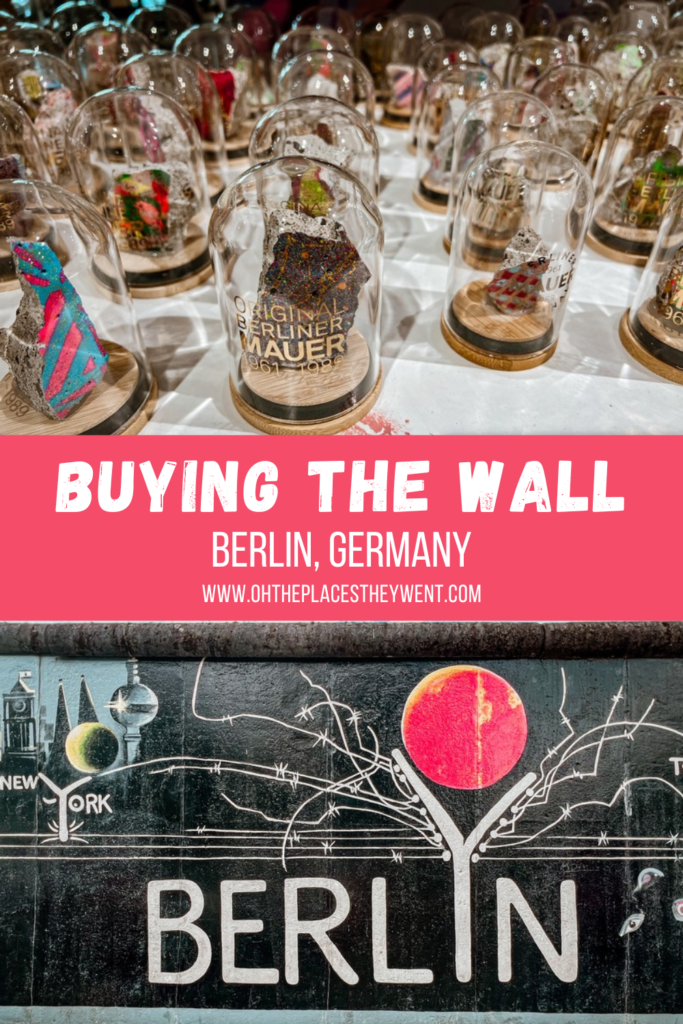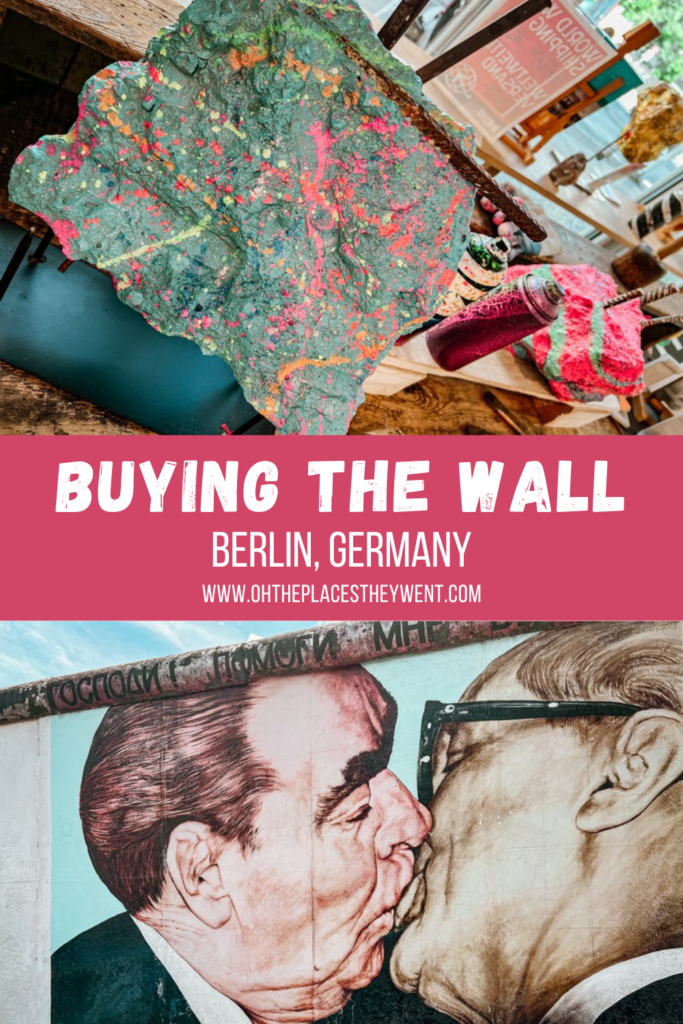Would You Buy A Piece Of The Berlin Wall?
Picture this: you’re walking through the bustling streets of Berlin, and you stumble upon a souvenir shop. They’re not hard to spot. Amidst the postcards, keychains, and other memorabilia, you see it—a piece of the Berlin Wall.
Instantly, a wave of questions floods your mind. Would you buy a piece of the Berlin Wall? What does it mean to own a fragment of history? Is it even real?

(This post contains affiliate links, which means I receive a certain percentage of a sale if you purchase after clicking at no cost to you. Thank you for your support.)
Those who cannot remember the past are condemned to repeat it. – George Santayana
On my recent trip to Berlin, Germany, I talked a lot with my family about how when I was in school it seemed we stopped learning about WWII with the liberation of the concentration camps. That was it, done, and we moved on to the next part of history in the book.
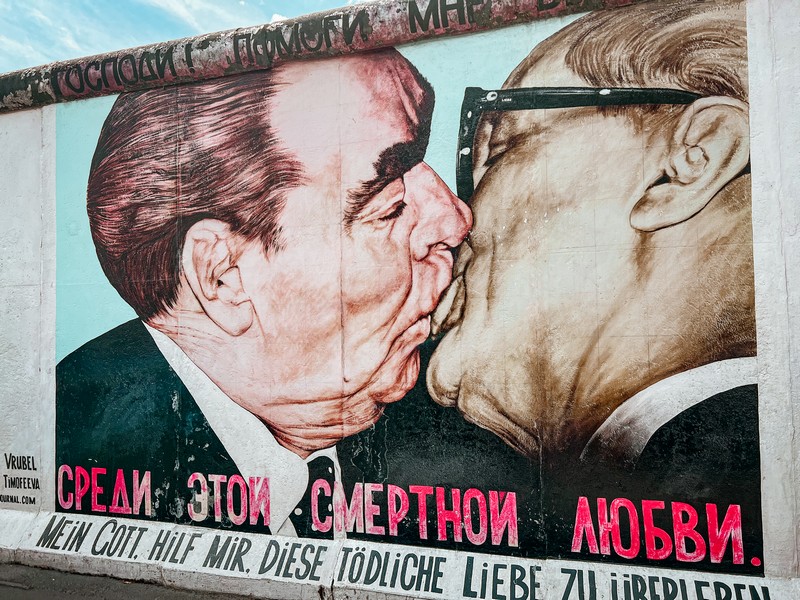
We didn’t learn about the Nuremberg Trials or how Germany became divided. We really didn’t touch on the Cold War or even the the Berlin Wall going up and then coming down. Suffice to say, this trip meant I was learning a lot that my middle school and high school classes never touched on and by college, I was studying other more major-related things that didn’t require history classes.
When you visit Berlin, every corner you turn and every street seems to feature a piece of the past that forces residents and visitors to reflect on the past and remember.

What To Know About The Berlin Wall
The Berlin Wall was built by the German Democratic Republic during the Cold War era. Between 1949 and 1961, about 2.5 million East Germans fled from East Germany to West Germany. This included skilled workers, professionals, and intellectuals, so in order to stop the growing number of people running away from the Communist regime, a barrier was built.
Did you know: About 5,000 East Germans still managed to cross the Berlin Wall to reach West Germany. Another 5,000 were captured by the East German authorities in an attempt to cross the wall. And 191 people were killed in their attempt to cross the wall.
The original walk was barbed wire and later concrete walls that were up to 15 feet high were erected. By the 1980s, the wall was 28 miles through Berlin and extended a further 75 miles around West Berlin completely separating it from East Germany.
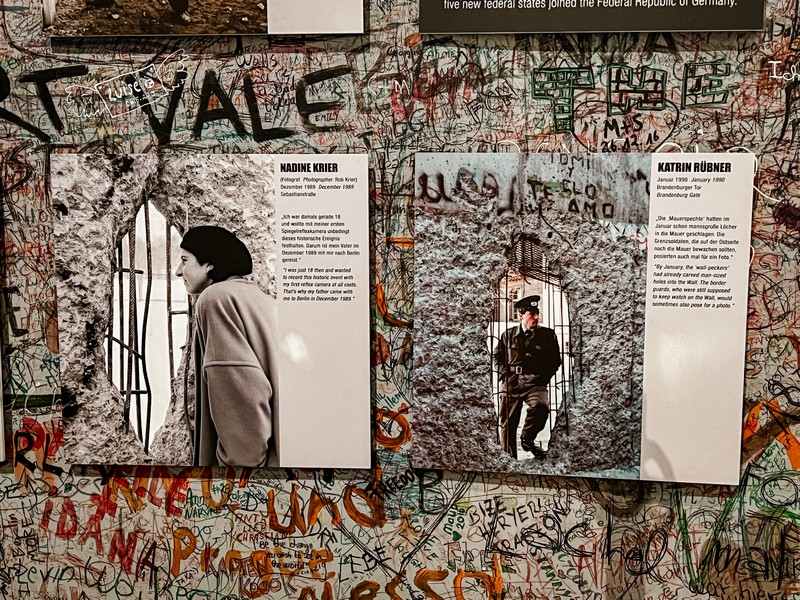
Then after 28 years, it was announced there would be new policies regarding border crossings and it kicked off “the greatest street party in the history of the world,” as one journalist wrote. The reunification of East and West Germany was official as of October 3, 1990.

Are Berliner Mauer Berlin Wall Fragments Authentic?
They are… and they aren’t. Here’s what to know about the Berliner Mauer pieces you see around Berlin.
The man behind the wall: Volker Pawlowski turned remnants of the Berlin Wall into a small fortune. Once a construction worker, Pawlowski now dominates the market for these historical souvenirs.
After the wall fell, Pawlowski noticed “wall woodpeckers” chipping away at the concrete. Street vendors began selling chunks of the wall to eager buyers. Curious about the destination of these pieces, Pawlowski followed a truck to a recycling center. There, he struck a deal to store wall segments, reducing some in size with a jackhammer.
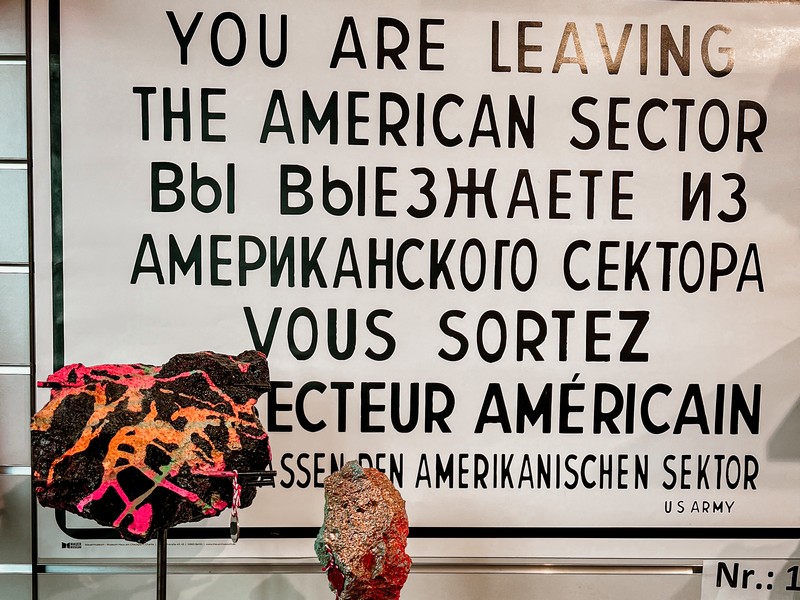
Today, Pawlowski sells wall fragments with certificates of authenticity, though he admits these might be more about the charm than strict historical accuracy. There’s enough wall to last another hundred years.
The market for these pieces is fascinating. From whole segments to tiny chunks, buyers from around the world are drawn to these colorful fragments. Why colorful? Because graffiti-covered pieces sell better. Pawlowski’s team, including a friend of his daughter, re-sprays these pieces to ensure they look appealing to tourists. So, while the wall may be authentic, the colorful hues you’re drawn to, are not.

The fall of the Berlin Wall sparked a capitalist response, turning these fragments into retail commodities. From large slabs to tiny crumbs, these pieces are boxed and sold to tourists, each piece offering a glimpse into a past filled with division and danger.

They’re also gifted to other countries. I’ve seen pieces of the Berlin Wall at a few different sites in the similarly separated North and South Korea. The pieces are a reminder of the resilience of the human spirit and the power of unity over division.
So next time you’re in Berlin, standing in front of a souvenir shop, ask yourself: would you buy a piece of the Berlin Wall? Maybe, just maybe, you’ll find your answer in the colorful fragment staring back at you.
Did you like this post? Pin IT!
